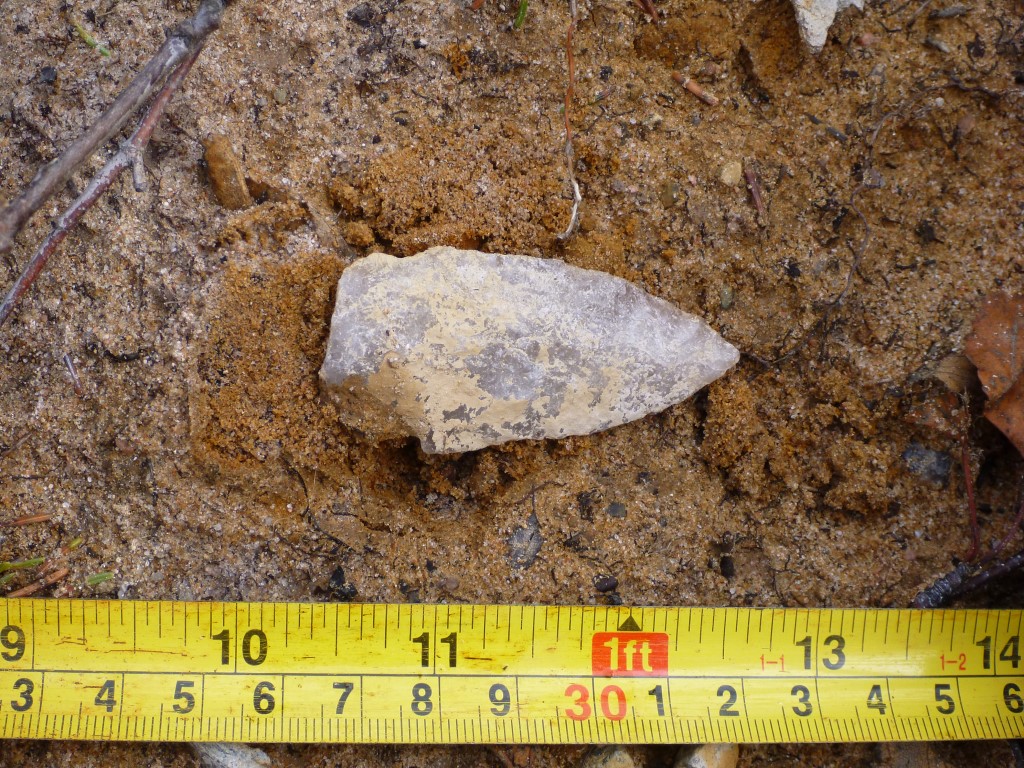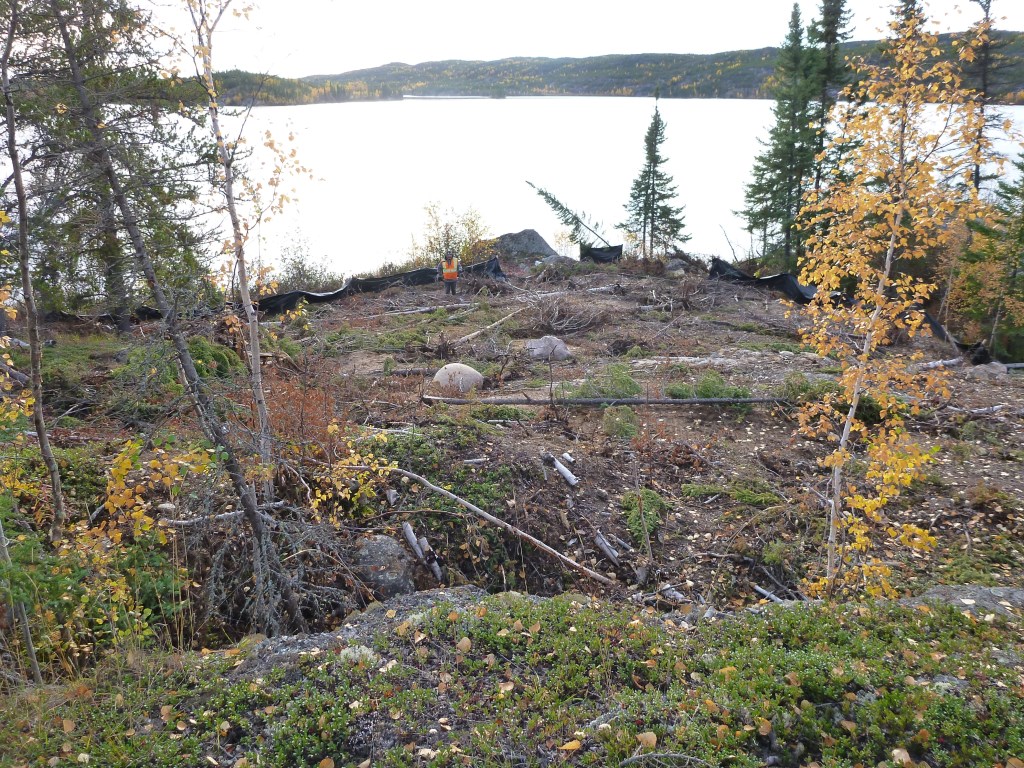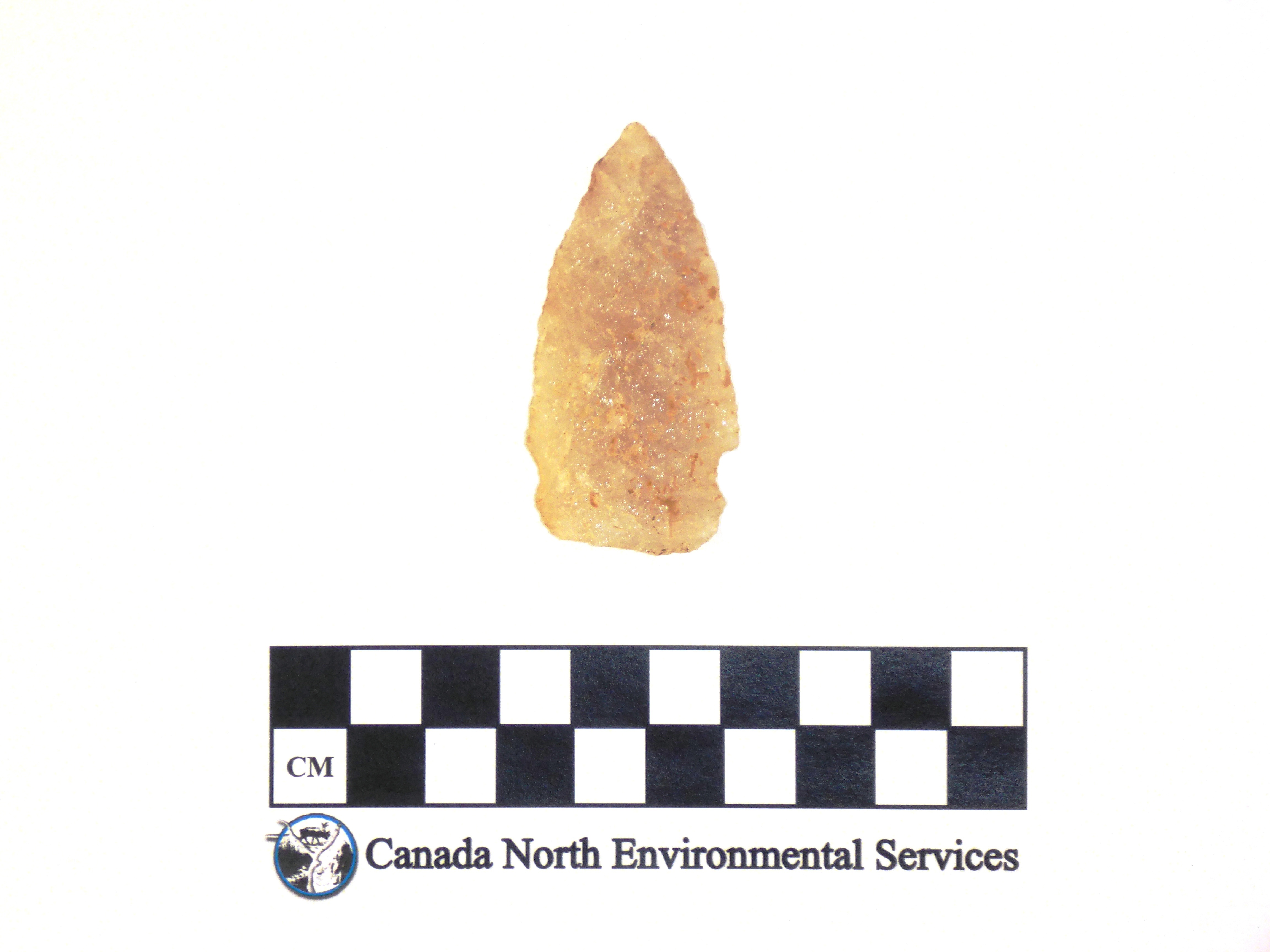
This blog post is based on a presentation given at SRC by Alan Korejbo, Senior Archeologist at Canada North Environmental Services.
There’s history buried under your feet. Artifacts from those who lived and worked before us. As kids, we may have come across an arrowhead or a tea kettle or a fossil. Cherished relics of the past.
While it’s a lot more work than digging in the sand for buried treasure, archeologists are uncovering hundreds of artifacts in Saskatchewan every year. The Government of Saskatchewan’s Heritage Property Act (1980) was established to protect and conserve heritage properties and archaeological and paleontological sites in Saskatchewan. Our heritage resources and archaeological sites are non-renewable; once an archaeological site is disturbed or artifacts are damaged or destroyed, the knowledge that may have been gleaned from them could be lost forever.
There are many culturally significant areas in Saskatchewan where there’s a higher chance of finding heritage resources (e.g., in sand dunes, near significant bodies of water). When there’s a risk of development impacting heritage resources (e.g., highway crews digging a new road), the Heritage Conservation Branch (HCB) uses a screening process to determine if the project is heritage sensitive, based on a number of criteria, such as distance to water or terrain. If the project is deemed heritage sensitive, a Heritage Resources Impact Assessment is required.
Depending on the HCB’s recommendations, an assessment might need to be done before, during and/or after the development work.
Case Study: Project CLEANS
As part of a large-scale, multi-site remediation project we’re working on called Project CLEANS (Cleanup of Abandoned Northern Sites), pre- and post-impact site surveys were carried out to support the 2016 remediation activities at the Gunnar Mine and Mill Site and the Satellite Sites. Post-Impact Assessments were conducted at the Satellite Sites, which meant the areas were assessed after construction work took place.

Senior Archeologist, Alan Korejbo, from Canada North Environmental Services was surveying the abandoned Cayzor Athabasca Mine, two kilometers northwest of Uranium City, when a glint of something protruding from the dirt caught his eye. He’d found a projectile point lying on the ground on the shore of Jean Lake that was uncovered during earthwork at the site.
“Although archaeologists develop a sharp eye to detect such things,” Korejbo says, “the moment one discovers a pristine artifact that has likely lain dormant over several millennia is almost always surreal. The imagination begins to take over trying to determine what this person was doing here. How did they live? What did they eat? What did their family or group look like? These are some very important cultural questions.” Additional assessments included digging small test pits in the areas disturbed by construction.
“After the discovery, we surveyed the site’s surface to see if further heritage resources, such as stone tools or features like fire hearths or stone cairns were visible on the surface,” explains Korejbo. “We didn’t find any other heritage resources, and the site was accurately mapped and recorded.”
In addition, the archeologists excavated several square holes about 60-cm deep by hand, a process called shovel testing. “We wanted to see if further heritage resources might be buried at the site. We didn’t find any, but there’s a high potential for further artifacts or features to be discovered at this site. We recommend further archaeological work if future development might impact the site.”
The finely-crafted point, made of quartz, is approximately six centimetres long. “This craftsmanship is typical of Northern Plains archeological cultures,” says Korejbo. “The large neck width suggests this may have been used as a lance, perhaps to spear large mammals as they swam across the lake or at a buffalo pound. We did a comparative analysis of the point’s form and manufacturing method, and the results suggest it may be approximately 5,500 to 7,500 years old.”

The Prince Albert Grand Council was consulted and they recommended SRC place some tobacco where the artifact was found, as a gift for removing the artifact. The artifact has been transferred to the Royal Saskatchewan Museum, which houses all artifacts found in Saskatchewan.
SRC shared information about the discovery with the communities at meetings and in our newsletter. We also invited community leaders to an archeological workshop held at SRC, which was presented by Alan Korejbo. These initiatives gave the communities an opportunity to ask questions and learn more about how the site survey was conducted and how the artifact would be preserved.
“Archaeological sites are notoriously difficult to detect in the north due to the relatively sparse nature of northern sites and dense vegetation cover,” says Korejbo. “Although development does have the potential to disturb or destroy sites, projects such as Project CLEANS can also help us discover and protect valuable heritage resources.” Not only is remediating the land helping to remove environmental and safety risks, it’s creating an opportunity to increase the odds of an archeological site discovery. “If sites are discovered, we can assess their interpretive value and determine if further archaeological mitigation or protection is needed.”
